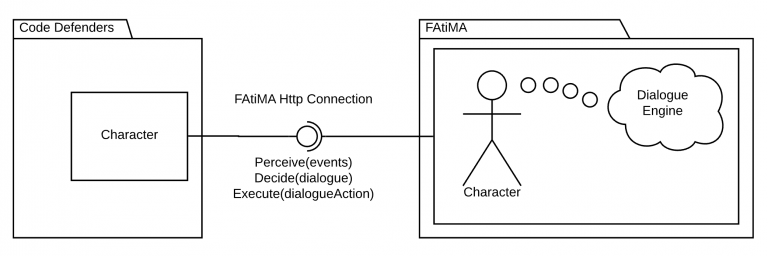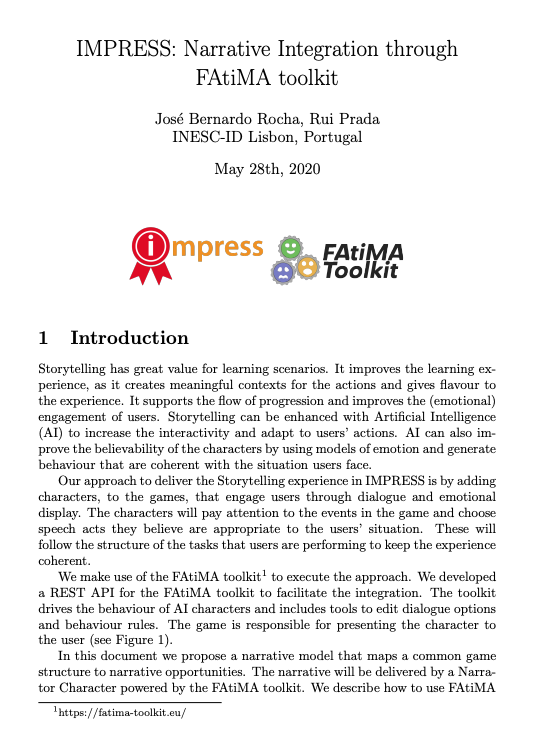AI Storytelling Support
Storytelling has great value for learning scenarios. It improves the learning experience, as it:
- Creates meaningful contexts for the actions
- Gives flavour to the experience
- Supports the flow of progression
- Improves (emotional) engagement
Storytelling can be enhanced with Artificial Intelligence (AI) to:
- Increase the interactivity
- Adapt to players’ actions
- Be emotionally believable (using models of emotions)
The IMPRESS Approach
Our approach is to deliver the Storytelling experience, by adding characters, to the games, that engage users through dialogue and emotional display. The characters will pay attention to the events in the game and choose speech acts they believe are appropriate to the situation. These will follow the structure of the tasks that users are performing to keep the experience coherent.
We make use of the FAtiMA toolkit to execute the approach. We developed a REST API for the FAtiMA toolkit to facilitate the integration. The toolkit drives the behaviour of AI characters and includes tools to edit dialogue options and behaviour rules. The game (or tool) is responsible for presenting the character to the user.

Papers and publications
- José Bernardo Rocha and Rui Prada. IMPRESS: Narrative Integration through FAtiMA toolkit. INESC-ID Lisbon, Portugal May 28th, 2020.
ABSTRACT: In this paper we describe the use of FAtiMA toolkit for story telling. We propose a Hierarchical Narrative Model that uses a common game structure to identify opportunities to introduce narrative elements to a game. We follow a game structure that can be found in many games, particularly in old platform games. We defined the model to include the most complex structures, but it can even be applied to games that don’t follow the structure strictly, as we can use only the parts of the hierarchical model that are relevant the concrete game we are addressing.

